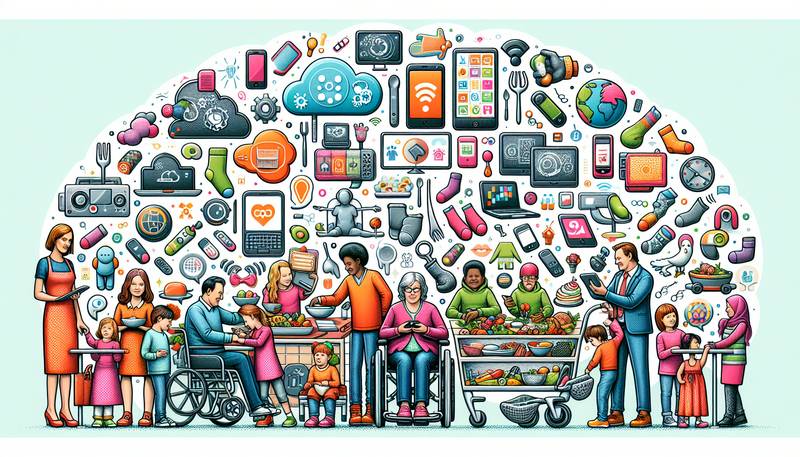Inclusive Design: Making Technology Accessible for All

Crafting a World for EveryoneImagine a world where every gadget, app, and gizmo could be used by anyone, from the tech-savvy whiz kids to your beloved Aunt Edna, who still thinks that 'the cloud' is a place for lost socks. Inclusive design is all about making technology accessible, ensuring that everyone—regardless of ability, age, or tech proficiency—can interact with the digital sphere. It’s like creating a buffet where every dish has a label, and no one leaves hungry or confused!Inclusive design champions the idea that accessibility should be baked right into the recipe of design. It’s not an afterthought or a sprinkle of icing on the cake; it’s more like the flour that holds everything together. This philosophy encourages tech creators to think beyond the typical user and to consider a diverse range of needs—because everyone deserves to join the digital party.The 'Why' Behind Inclusive DesignWhy should we care about inclusive design? Consider this little nugget: over a billion people worldwide live with some form of disability. That’s a significant slice of the pie! If designers ignore their needs, they’re not just being inconsiderate; they’re missing out on a huge market and plenty of potential fans. Moreover, creating inclusive products isn’t only ethical; it’s smart business. A wider audience means greater demand, and let’s face it: the more users, the more feedback, and the more opportunities for improvement. It’s like casting a wider net while fishing—you’re more likely to reel in a big one!Common Missteps in DesignEven the most well-intentioned designers can trip into pitfalls. Here are a few missteps to dodge, like stepping on a Lego in the dark: - Overly Complex Interfaces: Imagine trying to navigate a corn maze blindfolded. Simple interfaces are essential for everyone, particularly those with cognitive impairments.
- Ignoring Color Contrast: Not everyone can see the world in vibrant technicolor. Designs that rely heavily on color can leave many users feeling like they’re watching a grayscale film.
- Neglecting Keyboard Navigation: Not all tech users can use a mouse. Designing with keyboard navigation in mind is like giving everyone a VIP pass to the show.
Incorporating Inclusive PracticesHow can designers get their act together and embrace inclusivity? Start by asking questions and embracing feedback. Here’s how: - Conduct User Testing: Bring in a diverse group of users during testing. Their insights might reveal issues you’d never have thought of—like that one button that no one can find in a pixelated jungle.
- Consider Assistive Technologies: Familiarize yourself with screen readers and other assistive tech. It’s like learning a new language; once you understand it, communication becomes smoother.
- Create Flexible Choices: Offer customizable options. Just because one design choice works for one person doesn’t mean it’ll work for everyone—think of it as offering both cake and ice cream!
Success Stories in Inclusive DesignWhen inclusive design is done right, the results can be transformative. Take the example of Microsoft’s Office Suite, which integrates accessibility features like text-to-speech and customizable layouts. They didn’t just throw in a few features for good measure—they created an entire ecosystem that allows users of all abilities to thrive.Similarly, Apple is often lauded for its commitment to accessibility. They provide voice control, magnification, and various other features that ensure their devices can be used by virtually anyone. It’s like giving everyone the same front-row ticket to the concert—no better view exists!Moving Forward TogetherBuilding an inclusive design culture requires collaboration and dedication. Companies must foster environments where diverse voices are not only welcome but sought after. It’s important to remember that inclusivity isn't merely about compliance; it's about creating an enriching experience for all.Embracing inclusive design means recognizing that technology can be the bridge, not the barrier. As more organizations dive into this crucial approach, the world of tech can open its arms to all. After all, who wouldn’t want to wave at a bunch of happy, tech-savvy people successfully navigating their digital domain?The road to inclusiveness may have a few speed bumps, but the destination is more than worth the effort. It leads to a future where everyone can access—without stumbling over their own shoelaces— the wonderful world of technology.
|
|







